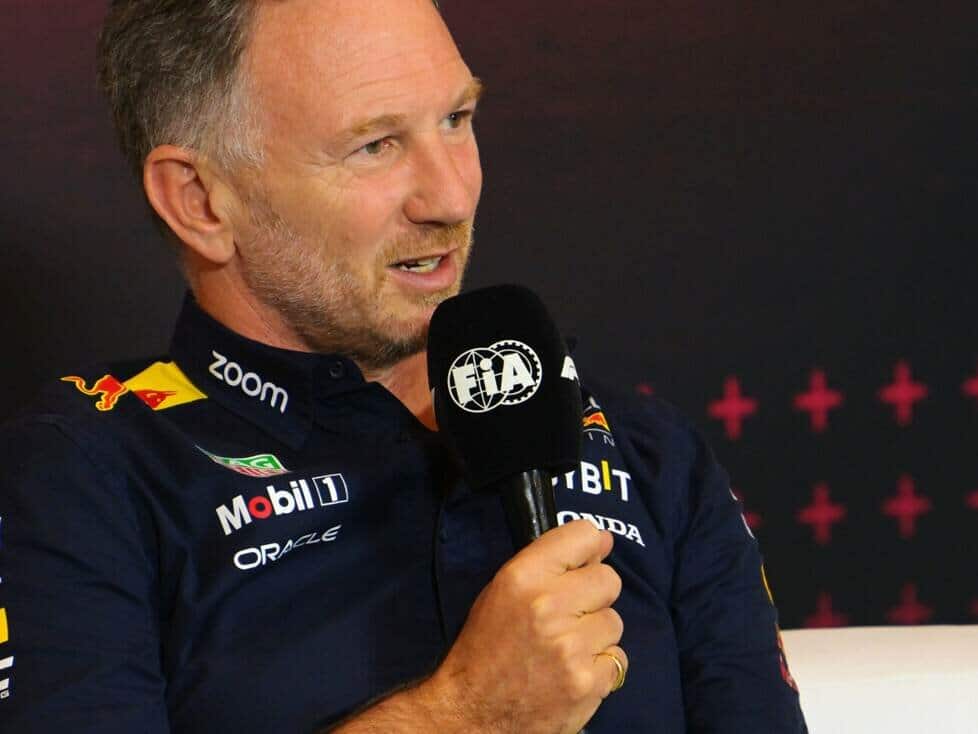How Red Bull team boss Christian Horner wants to blame McLaren driver Lando Norris for the incidents in Mexico and is asking for understanding for his theories
Red Bull team boss Christian Horner has a suspicion. He believes there is “something fundamental” behind the two time penalties against his Formula 1 driver Max Verstappen in Mexico. These are to be understood as a “reaction” to the previous USA Grand Prix in Austin, when Verstappen and Lando Norris had already clashed – with Verstappen coming out on top.
And now Horner also sees only misconduct on Norris’ part, as he explained in his media round after the Mexico Grand Prix. The Red Bull team boss launched a verbal counterattack and presented a bizarre theory about the incidents that earned Verstappen the two ten-second time penalties.
Horner claims that he recognized from the GPS data that Norris would not have had a chance of making turn four on the decisive lap. As “proof,” Horner cites a comparison to Norris’s fastest race lap and says, “On the lap with the incident with Max, Lando is 15 km/h faster [before turn 4] and later on the brakes than on his fastest race lap.”
According to Horner, this allows only one conclusion: “He would not have made the turn. He would have gone off the track. You can see that from his steering movements. And of course, at that point in the race, he probably had 80 kilograms more fuel than on his fastest lap.” In his opinion, Norris should have braked even earlier.
So Horner explains the second incident
So if Norris had slipped away from Verstappen in turn 4 even without “outside interference” from Verstappen, as Horner claims, what about the next scene in turn 8? Horner also has his own explanation for this: “I guess Max expected Lando to give him the position back. Max drives on the inside, both go off the track.”
Horner admits that “frustration” was involved with Verstappen, “probably” because Norris did not make a return exchange after the first incident. “Things like that just escalate,” says Horner.
McLaren team boss Andrea Stella, on the other hand, simply points out that Norris was keeping “his normal line” before Turn 8 “because he never expected Max to appear on the inside”. Postscript: “But the way it developed, there was no chance for Max to keep the car on the track.” A fact that Horner does not comment on further in his media round.
What Horner wants to achieve now
Instead, Horner calls for a new dialog between FIA stewards and drivers, because the parties involved “have to agree on something meaningful”. Tenor: “Trying to go around was once a distinction for the bravest. But we run the risk of turning the rules of the game upside down.”
On the basis of the latest sports marshals’ rulings, the Formula 1 drivers are now only concerned with “having the nose in front at the apex” when it comes to overtaking, says Horner. “And then they stand there and say they need space at the exit of the corner.” That’s what Norris did in Mexico at Turn 4.
Overtaking only with “instruction manual”?
“But on every kart track in the world, if you are on the inside, you control the corner. That’s a principle of the physics of racing. And I think we need to get back to those basics. If you are on the outside, you have no priority. Otherwise there will be chaos in the rest of the races,” says Horner.
In his opinion, the current race director decisions only ‘complicate’ Formula 1 racing. Then he picks up on a remark from Verstappen and adds: ”You now need an instruction manual for an overtaking maneuver! And now we have a situation in which a driver simply has to have the nose in front at the apex, regardless of whether he can take the corner or not.”
Horner calls for ‘fair rules of the game’
This urgently needs to be “corrected again,” says Horner. All parties involved need to “know what is and is not acceptable until the end of the season.”
But what if no one intervenes and the current attitude of the stewards remains unchanged? Horner does not address this question. Instead, he once again emphasizes his thesis that the inside is no longer the decisive factor, but that “the advantage is now on the outside, because the driver can simply brake later there and then complain,” says Horner.
“Historically, that was always the riskier position. But now it’s where the advantage lies, and it would be important to have fair rules. We should also not over-regulate the matter and endorse behavior that does not correspond to the principles of motorsport.”

